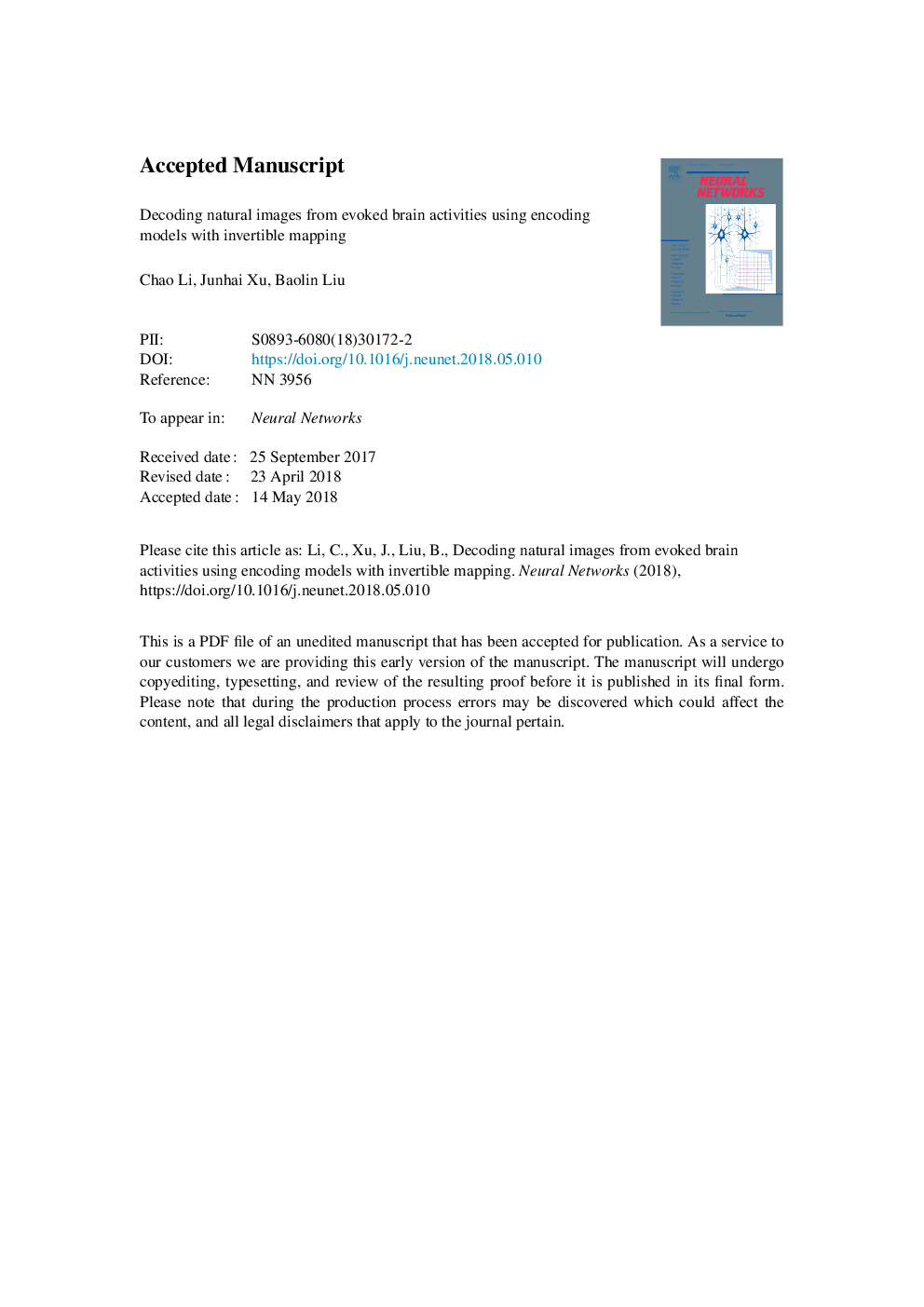| Article ID | Journal | Published Year | Pages | File Type |
|---|---|---|---|---|
| 6862865 | Neural Networks | 2018 | 30 Pages |
Abstract
Recent studies have built encoding models in the early visual cortex, and reliable mappings have been made between the low-level visual features of stimuli and brain activities. However, these mappings are irreversible, so that the features cannot be directly decoded. To solve this problem, we designed a sparse framework-based encoding model that predicted brain activities from a complete feature representation. Moreover, according to the distribution and activation rules of neurons in the primary visual cortex (V1), three key transformations were introduced into the basic feature to improve the model performance. In this setting, the mapping was simple enough that it could be inverted using a closed-form formula. Using this mapping, we designed a hybrid identification method based on the support vector machine (SVM), and tested it on a published functional magnetic resonance imaging (fMRI) dataset. The experiments confirmed the rationality of our encoding model, and the identification accuracies for 2 subjects increased from 92% and 72% to 98% and 92% with the chance level only 0.8%.
Keywords
Related Topics
Physical Sciences and Engineering
Computer Science
Artificial Intelligence
Authors
Chao Li, Junhai Xu, Baolin Liu,
